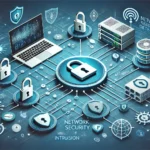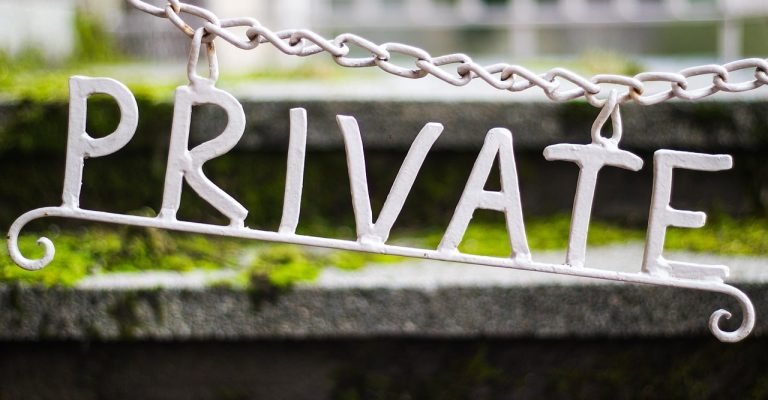Protecting your sensitive data is more crucial than ever. But what exactly is sensitive data, and how can you ensure it stays safe from prying eyes? This guide will break down the essentials of protecting your sensitive information, explaining what it is, why it matters, and how you can safeguard it against hackers.
What is Sensitive Data?
Sensitive data refers to information that must be protected from unauthorized access to safeguard the privacy or security of an individual or organization. This includes:
- Personal Identifiable Information (PII): Names, addresses, Social Security numbers, birth dates, and other personal details.
- Financial Information: Bank account numbers, credit card details, and income information.
- Health Records: Medical histories, prescriptions, and other health-related information.
- Intellectual Property: Business plans, trade secrets, and proprietary information.
Regulations and Standards
Understanding the importance of sensitive data, several regulations and standards have been established to protect it:
- General Data Protection Regulation (GDPR): Applies to data collected from EU citizens, emphasizing consent and data minimization.
- Health Insurance Portability and Accountability Act (HIPAA): Protects medical records and health information in the United States.
- Payment Card Industry Data Security Standard (PCI DSS): Sets security standards for organizations that handle credit cards.
- California Consumer Privacy Act (CCPA): Gives California residents more control over their personal information.
Why is Protecting Sensitive Data Important?
Protecting sensitive data is essential to prevent identity theft, financial loss, and breaches of privacy. Hackers are constantly devising new methods to steal personal and business data, which can lead to:
- Financial Fraud: Unauthorized transactions and misuse of financial information.
- Identity Theft: Personal data used to create false identities or commit crimes.
- Business Espionage: Theft of trade secrets and proprietary information, damaging competitiveness.
How to Protect Your Sensitive Data
1. Use Strong, Unique Passwords
Creating strong passwords is your first line of defense. Ensure your passwords: Are at least 12 characters long. Include a mix of letters (both uppercase and lowercase), numbers, and special characters.
Are unique for each account. Consider using a password manager to keep track of your passwords securely.
2. Enable Two-Factor Authentication (2FA)
Two-factor authentication adds an extra layer of security by requiring not only a password but also a second form of verification, such as a text message code or an authentication app.
3. Encrypt Your Data
Encryption transforms your data into a code, making it unreadable to unauthorized users. Use encryption for:
- Files and folders on your devices.
- Emails containing sensitive information.
- Data stored on cloud services.
4. Keep Your Software Updated
Regularly update your operating system, browsers, and any software applications you use. Updates often include patches for security vulnerabilities that hackers can exploit.
5. Be Wary of Phishing Attacks
Phishing attacks attempt to trick you into providing personal information by posing as a legitimate source. To avoid falling victim: Never click on links or download attachments from unknown or suspicious emails. Verify the sender’s email address. Look for signs of phishing, such as generic greetings and urgent requests for information.
6. Use Secure Networks
Avoid using public Wi-Fi for transactions involving sensitive data. If you must use public Wi-Fi, employ a Virtual Private Network (VPN) to encrypt your internet connection.
7. Regularly Back Up Your Data
Regular backups can save you in case of data loss due to malware or hardware failure. Store backups in a secure location, such as an external hard drive or a reputable cloud service.
8. Limit Data Sharing
Only share your sensitive information with trusted parties and only when absolutely necessary. Review privacy settings on social media and other platforms to control what information is shared publicly.
9. Monitor Your Accounts Regularly
Frequent monitoring of your financial accounts, credit reports, and other sensitive data sources can help you catch any suspicious activity early. Set up alerts for unusual transactions and periodically review your account statements.
10. Educate Yourself and Others
Stay informed about the latest cyber threats and data protection strategies. Share your knowledge with friends, family, and colleagues to create a more security-conscious community.
11. Implement Security Policies at Work
If you’re a business owner or manager, establish and enforce comprehensive security policies. Train employees on data protection practices and ensure that everyone understands the importance of safeguarding sensitive information.
12. Dispose of Data Securely
When you no longer need sensitive data, ensure it is disposed of securely. Shred physical documents and use data wiping tools for digital files to prevent data from being recovered by unauthorized individuals.
13. Use Anti-Malware Software
Install reliable anti-malware software on your devices to protect against viruses, spyware, and other malicious software. Regularly update the software and run scans to detect and remove any threats.
14. Be Cautious with Personal Devices
Ensure that your personal devices, such as smartphones and tablets, are secured with passwords, biometric locks, and encryption. Avoid storing sensitive data on devices that are frequently taken outside of secure environments.
15. Review App Permissions
Before installing apps on your devices, review the permissions they request. Be cautious about granting access to sensitive information and only download apps from trusted sources.
16. Secure Physical Access
Protect physical access to your sensitive data by securing your home and workplace. Use locks, access controls, and security cameras to prevent unauthorized individuals from accessing your information.
Conclusion
Protecting your sensitive data requires vigilance and proactive measures. By understanding what constitutes sensitive data and adhering to best practices for data security, you can significantly reduce the risk of being hacked. Stay informed about the latest security threats and continuously update your protective measures to stay one step ahead of cybercriminals.














